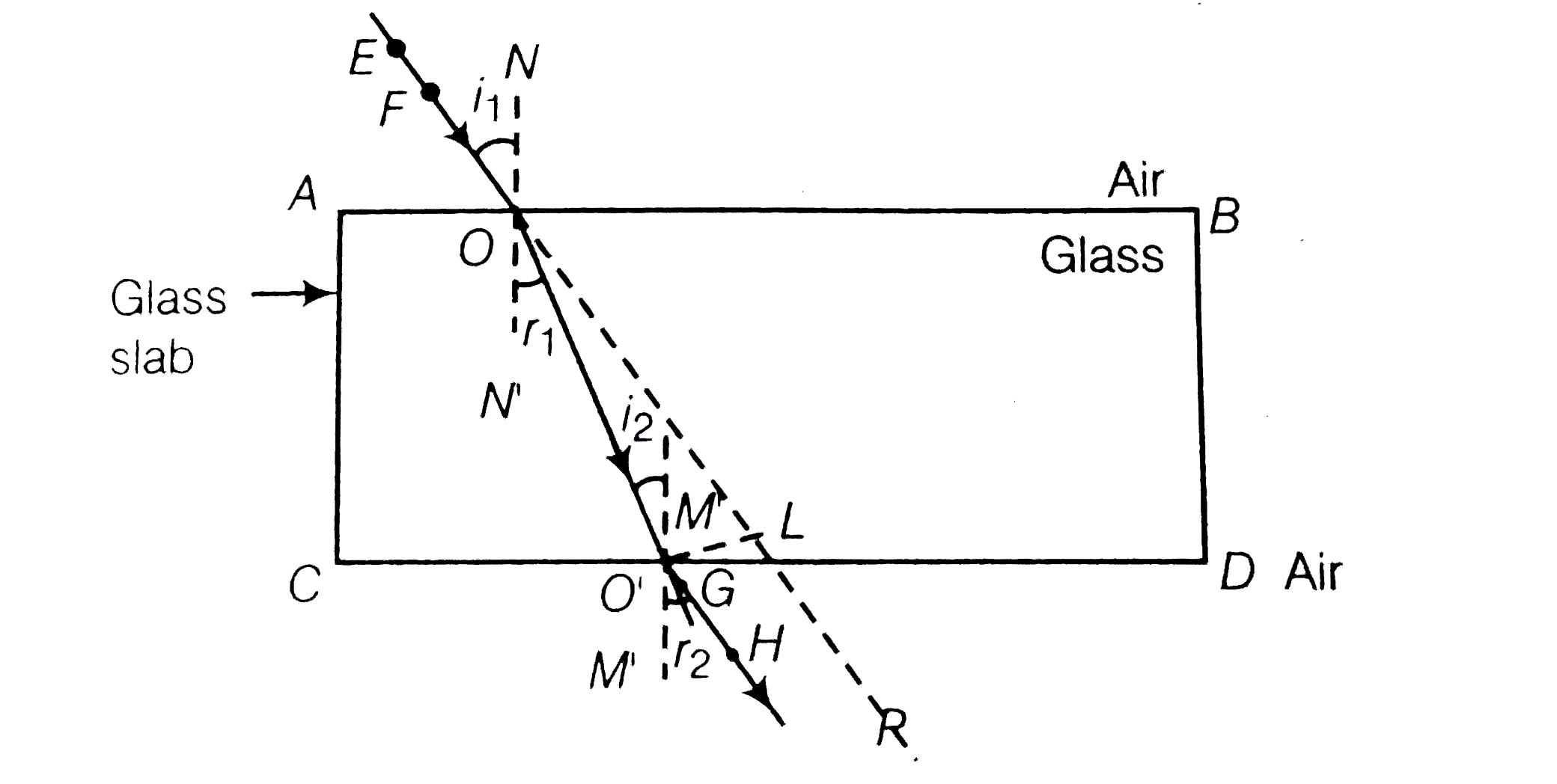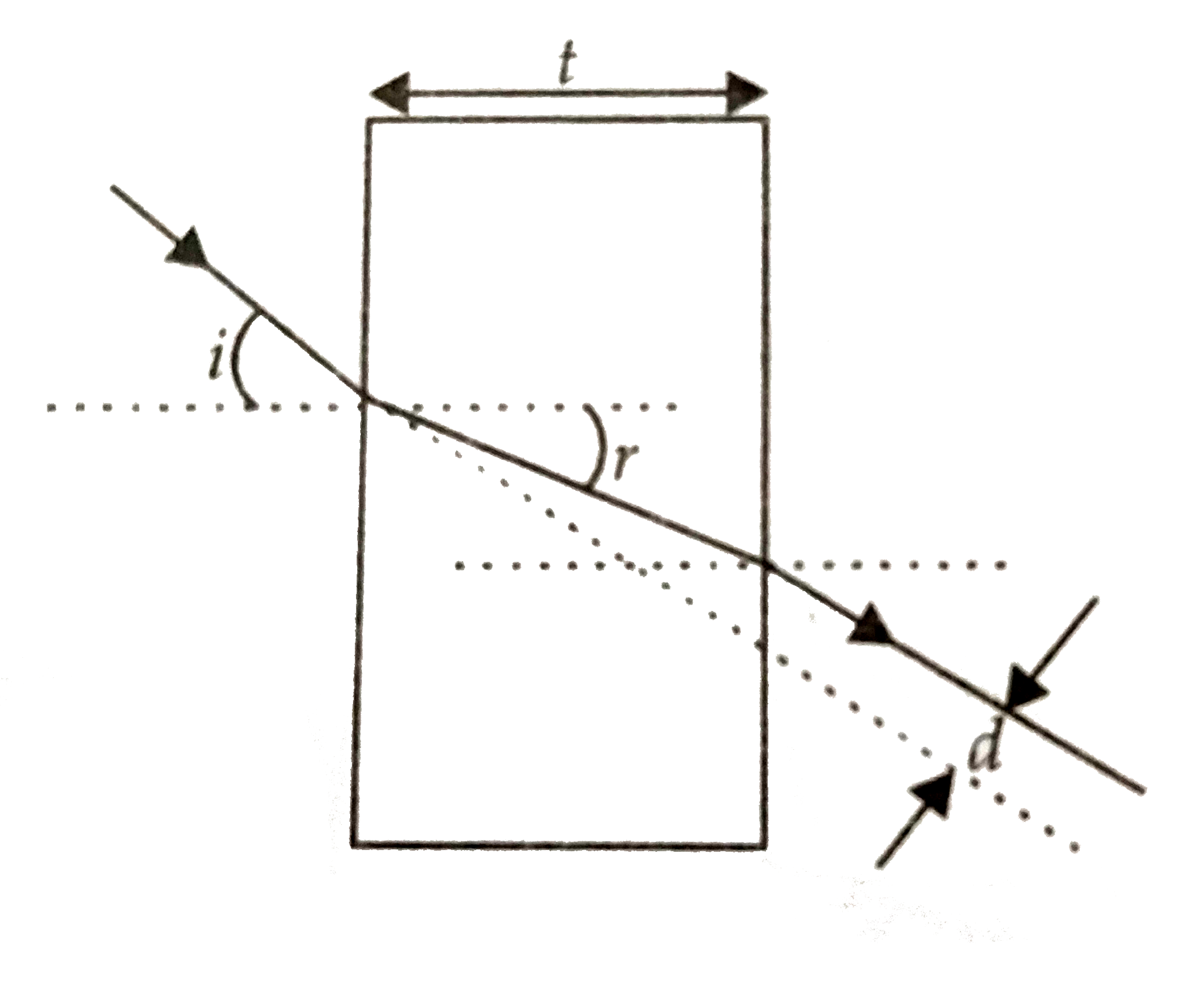Why does a light ray incident on a rectangular glass slab immersed in any medium emerges parallel to itself ? Explain using a diagram.
In the given figure, EO is the incident ray, OO' is the refracted ray and O'H is the emergent ray.

The extent of bending of the ray of light at the opposite parallel faces AB (air-glass interface) and CD (glass-air interface) of the rectangular glass slab is equal and opposite. This is why the ray emerges parallel to the incident ray on a rectangular glass slab. However, the light ray is shifted sideward slightly. When glass slab in immersed in any medium the interface AB (medium-glass) and CD glass medium are equal and apposite so, the emergent ray will always be parallel to the incident ray.
Topper's Solved these Questions
Similar Questions
Knowledge Check
When light is incident from air on a rectangular glass slab and then the angle of incidence willl be:
A0∘B45∘C90∘Ddepends on the refractive index of glassA ray of white light passes through a rectangular glass slab, entering and emerging at parallel faces. The angle of incidence measured from the normal to the glass surface, is large. Then
AWhite light will emerge from the slabBThe light emerging from the slab will have a number of parallel, colored raysCThe emergent rays will not form a spectrum on a screenDColors will be seen if the emergent rays enter the eye directlyWhen rays of light are incident on a glass slab, then the incident ray and emergent ray are ……….. To each other.
AperpendicularBparallelCoppositeDconcurrent
Why is there no dispersion of light refracted through a rectangular glass slab ?
View SolutionWhy there is no dispersion of light refracted through a rectangular glass slab?
View SolutionWhen a ray of light travelling in air enters obliquely into a glass slab, it is observed that the light ray emerges parallel to the incident ray but it is shifted sideways slightly. Draw a labelled ray diagram to illustrate it.
View SolutionA rays of light is incident on a thick slab of glass of thickness t as shown in figure. The emergent ray is parallel to the incident ray but displaced sideways by a distance d. If the angles are small then d is

View SolutionA ray of white light passes through a rectantular glass slab, entering and emerging at parallel faces. The angle of incidence, measured from the normal to the glaass surface, is large.
View Solution
